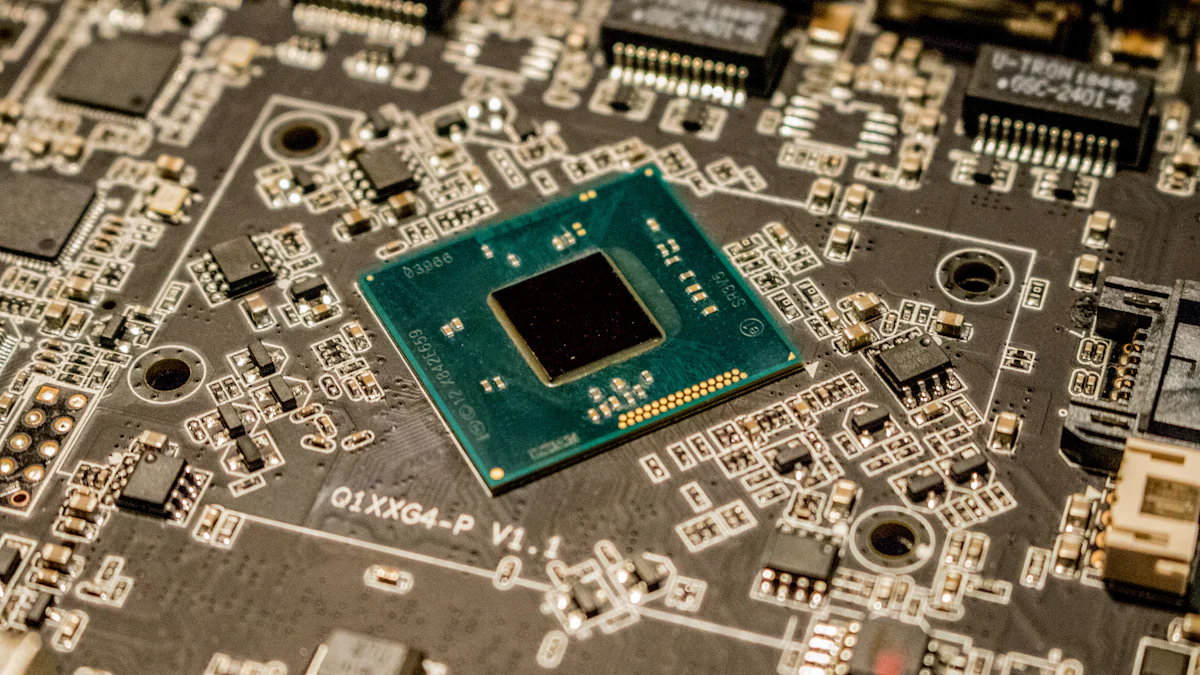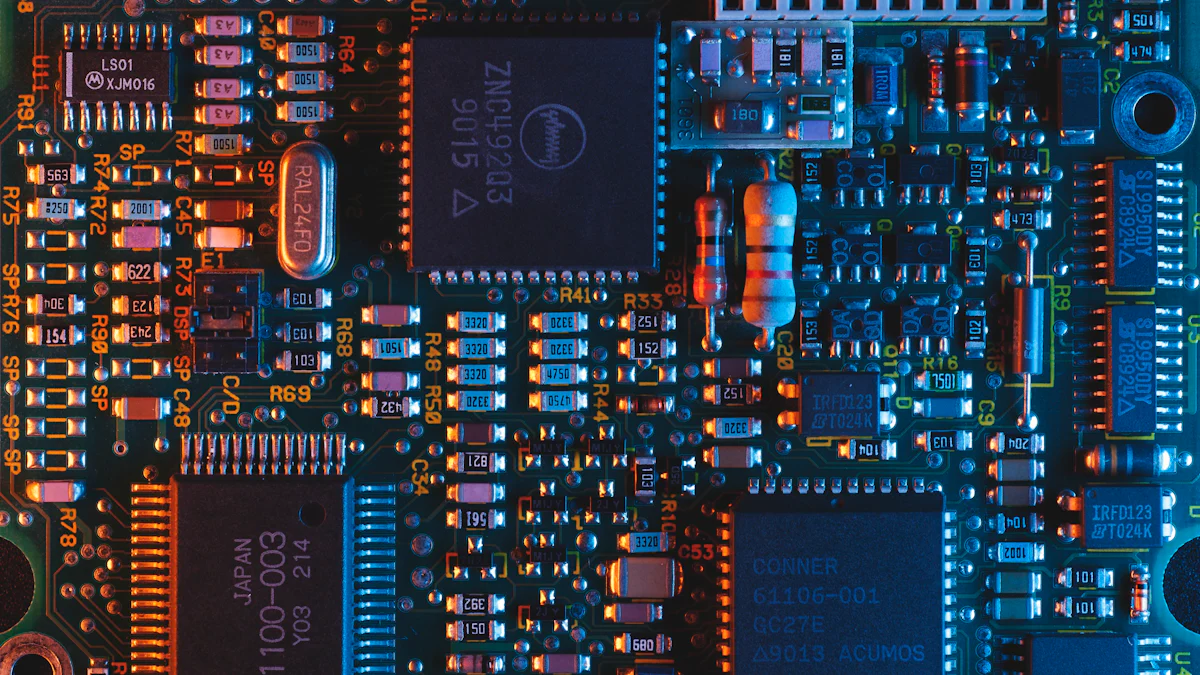Quality Control Secrets in the Semiconductor Industry

The Semiconductor Industry stands as a pillar of innovation, with sales growing by more than 20% to about $600 billion in 2021. Its aggregate annual growth could average from 6 to 8 percent a year up to 2030. In this dynamic landscape, the significance of Quality Control cannot be overstated. Implementing robust quality control practices is paramount for ensuring that products meet high-quality standards and maintaining a competitive edge. Let's delve into the pivotal role of quality control in semiconductor manufacturing and explore key strategies and advanced techniques shaping the industry.
Importance of Quality Control

Quality Control lies at the heart of the semiconductor industry, ensuring that products meet stringent standards for reliability and performance. By implementing robust quality control measures, semiconductor manufacturers can guarantee product reliability and reduce manufacturing costs significantly.
Role in the Semiconductor Industry
Ensuring Product Reliability
Implementing data-driven quality control processes is essential to maximize yields in semiconductor manufacturing. Through rigorous inspections and adjustments based on real-time data analysis, manufacturers can enhance productivity, efficiency, and product yield. This approach not only improves product reliability but also boosts customer confidence in the brand's offerings.
Reducing Manufacturing Costs
The impact of quality control on cost reduction cannot be overstated. By identifying and rectifying defects early in the production process, manufacturers can prevent costly rework or recalls. AI technologies play a crucial role in defect detection and prediction, leading to enhanced manufacturing processes, defect prevention, and predictive maintenance. This proactive approach not only saves costs but also streamlines operations for long-term sustainability.
Key Quality Control Strategies
One key strategy employed by semiconductor companies is Quality Function Deployment (QFD). This method focuses on translating customer requirements into specific engineering characteristics to ensure that products meet or exceed user expectations. By aligning design, development, and production processes with customer needs, QFD enhances overall product quality and customer satisfaction.
Heuristic algorithms offer a unique perspective on quality control planning in semiconductor manufacturing. These algorithms leverage past experiences and problem-solving techniques to guide decision-making processes effectively. By analyzing historical data and identifying patterns, heuristic algorithms help optimize quality control strategies for improved outcomes.
Advanced Quality Control Techniques

In the realm of semiconductor manufacturing, embracing Automation and AI heralds a new era of efficiency and precision. By leveraging cutting-edge technologies, companies can streamline operations, minimize errors, and enhance overall quality control processes.
Automation and AI
Reducing Human Error
Automation in semiconductor manufacturing has revolutionized the industry by significantly reducing human error. Machines equipped with advanced algorithms can perform intricate tasks with unparalleled accuracy, eliminating the margin for human mistakes. This not only ensures consistent product quality but also boosts operational efficiency by expediting production cycles.
Increasing Efficiency
The integration of AI technologies in quality control processes paves the way for heightened efficiency across all facets of semiconductor manufacturing. AI-powered systems can analyze vast amounts of data in real-time, enabling swift decision-making based on actionable insights. By automating routine tasks and predictive maintenance activities, manufacturers can optimize resource utilization and enhance overall productivity.
ICTM Method
Comparison with LATM
A groundbreaking development in quality control strategies is the ICTM Method, which surpasses its predecessor, LATM, in terms of efficacy and performance. Unlike traditional methods that rely on manual interventions, ICTM leverages AI algorithms to drive proactive decision-making based on real-time data analysis. This dynamic approach not only enhances defect detection capabilities but also accelerates response times to potential quality issues.
Benefits of ICTM
The adoption of the ICTM Method offers a myriad of benefits for semiconductor manufacturers seeking to elevate their quality control practices. By harnessing the power of AI engines, companies can achieve unparalleled levels of accuracy in defect prediction and prevention. Moreover, the seamless integration of ICTM into existing quality assurance frameworks empowers organizations to proactively address emerging challenges and maintain a competitive edge in the market.
Future Trends in Quality Control
Integration of AI Engines
In the ever-evolving landscape of semiconductor manufacturing, the integration of AI Engines emerges as a transformative trend reshaping quality control practices. By leveraging cutting-edge technologies, companies can revolutionize compliance management and quality checks, ushering in a new era of operational excellence and precision.
Linking Quality Control and Yield Data
The seamless integration of AI technology enables real-time monitoring, inspection, and adjustment processes, ensuring meticulous attention to detail. Through advanced algorithms and high-precision inspection capabilities, manufacturers can achieve unprecedented levels of quality control. This dynamic approach not only enhances product reliability but also instills confidence in consumers by delivering top-notch products consistently.
Process Control Data
AI-powered systems offer unparalleled benefits in process control data analysis. By automating quality assurance processes and predictive maintenance activities, semiconductor manufacturers can optimize resource utilization and enhance overall productivity. The ability to analyze vast amounts of data swiftly empowers organizations to make informed decisions based on actionable insights, driving efficiency across all facets of manufacturing operations.
Green Chemical Management
A growing emphasis on Green Chemical Management underscores the industry's commitment to environmental sustainability without compromising product quality. By prioritizing eco-friendly practices, semiconductor companies can reduce their carbon footprint while ensuring the integrity of their offerings.
Environmental Sustainability
Embracing green chemical management practices not only minimizes environmental impact but also fosters a culture of responsible manufacturing. From reducing waste generation to optimizing energy consumption, these initiatives pave the way for a more sustainable future for the semiconductor industry.
Product Quality
The intersection of green chemical management and product quality is where innovation thrives. By incorporating environmentally friendly materials and processes into production cycles, manufacturers can enhance product quality while meeting stringent sustainability standards. This dual focus on quality and sustainability not only benefits the environment but also resonates with consumers who prioritize ethical and eco-conscious products.
Recap of the importance of quality control:
Patrick Bangert, an expert in Semiconductor Manufacturing QA/QC, emphasizes the critical role of quality assurance and control practices in the semiconductor industry. From forging silicon ingots to stamping intricate circuit designs, each step requires meticulous checks to ensure functional and fault-free circuits.
Summary of advanced techniques and future trends:
Embracing automation, AI technologies, and innovative methods like the ICTM approach are revolutionizing quality control in semiconductor manufacturing. The integration of AI engines for real-time monitoring and precision is reshaping compliance management, ensuring top-notch product reliability.
Call to action for industry professionals to adopt these practices:
Industry professionals must embrace these cutting-edge techniques to stay ahead in the competitive semiconductor landscape. By prioritizing quality control advancements and sustainable practices, companies can drive operational excellence and meet evolving consumer demands effectively.
See Also
Unlocking Achievement: High-Tech Manufacturing Consultation Demystified
Efficient Strategies for High-Tech Manufacturing's Logistics Challenges
The Path to Manufacturing Excellence: Essential Tactics
Cutting Through the Myths of High-Tech Manufacturing Automation
Guiding Through Automotive Supply Chain Hurdles: Expert Advice
